Explore Kom Ombo Temple: The Fascinating Twin Temple of Horus and Sobek
Have you ever heard about a temple dedicated to not just one but two gods? Look no further than Kom Ombo! This unique ancient Egyptian site features a dual temple dedicated to Horus, the falcon-headed god, and Sobek, the crocodile god.
Located on the banks of the Nile, Kom Ombo is a stunning example of symmetry and architecture that will leave you in awe. But that's not all – at the Crocodile Museum next door, you can even see mummified crocodiles up close.
Don't miss out on exploring this fascinating temple that highlights ancient Egypt's complex mythology and beliefs.

A brief overview of Kom Ombo Temple and its unique characteristics
The Kom Ombo Temple is a unique structure located on the banks of the Nile in the village of Kom Ombo. This temple is dedicated to two ancient Egyptian deities: Sobek, the crocodile god, and Haroeris, the falcon god Horus. This temple stands out because it is a double temple, with two sets of courts, hypostyle halls, and sanctuaries for each deity. It is historically and architecturally significant in Egypt, as there is evidence of an earlier temple built on the same site.
The temple has a well-preserved interior, full of intricate reliefs carved into columns and friezes, which reflect the different deities represented in the temple. What's fascinating about this temple is that the Ancient Egyptians believed worshipping crocodiles would protect them from being attacked. There is even a pool in the temple where the reptiles were raised. The crocodile god, Sobek, is considered one of the most important deities in Ancient Egyptian mythology because he was believed to be the protector of the Nile.
Another interesting aspect of the temple is the Crocodile Museum, home to hundreds of mummified crocodiles in the area. This exhibition also includes many intriguing explanations. The temple was constructed during great conflict and change in Ancient Egypt. The Ptolemaic Dynasty originally built it as a training depot for wild animals. Later, under the rule of Emperor Trajan, the forecourt and outer walls were added. The temple is a testament to the engineering, architectural and religious skills of the Ancient Egyptians. [1][2]
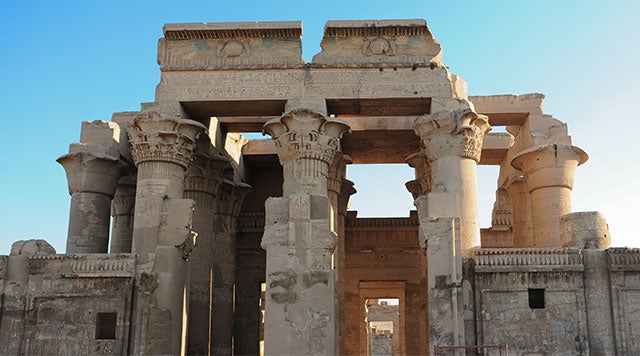
Discuss why Kom Ombo is unique in Egypt as a double temple.
The Temple of Kom Ombo is a remarkable structure that stands out among all other Egyptian temples. Its unique status as a double temple dedicated to not just one but two deities sets it apart. Kom Ombo Temple is dedicated to Horus, the falcon-headed god, and Sobek, the crocodile god.
Architecturally duplicated, this temple features two sets of courts, hypostyle halls, and sanctuaries, all symbolizing the local and universalist themes that the two different deities represent. The temple's construction dates back to the Ptolemaic period, though evidence suggests that an earlier temple existed on the same site.
Well-preserved and fascinating, the reliefs found in the temple include intricately carved columns and friezes, making Kom Ombo a must-see for any traveller interested in Egyptian history and mythology. This unique temple is also home to the Crocodile Museum, where visitors can explore mummified crocodiles and learn about the ancient belief that worshipping these animals would protect them.
In conclusion, the Temple of Kom Ombo is an architectural masterpiece, fascinating in its layout, symbolism, and ancient history. This site offers a truly unforgettable experience for anyone interested in the rich cultural heritage of Egypt. [3][4]
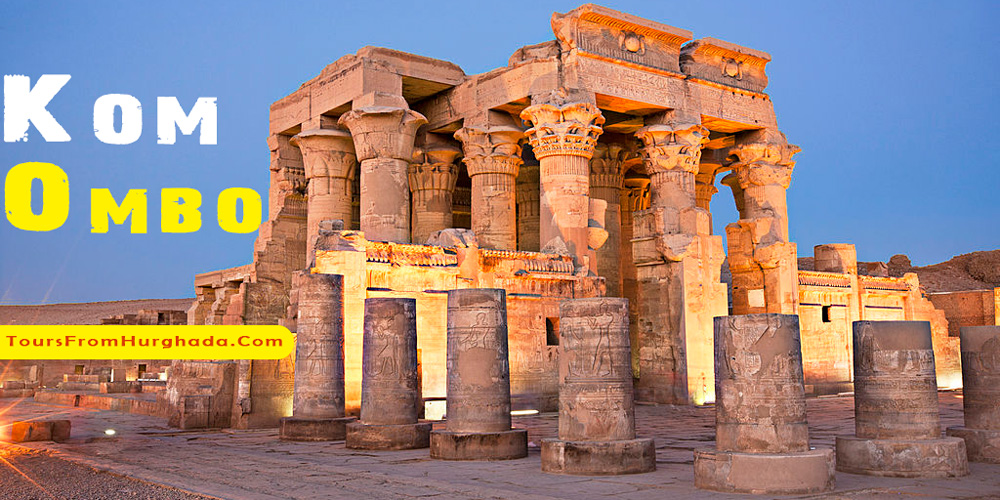
Describe the different deities represented and their significance
Located in the city of Kom Ombo in Upper Egypt, the Kom Ombo Temple is a stunning example of ancient Egyptian architecture and mythology. As a double temple, Kom Ombo is unique in Egypt and is dedicated to two main deities, Horus the Elder and Sobek.
Horus, the falcon-headed god of kingship, was worshipped in his form as Horus the Elder, who was linked to the pharaoh and the solar cult. Sobek, the crocodile-headed god, was the local deity of the area and was associated with fertility, protection, and military power.
The temple's layout was designed to have two parallel sections with separate entrances, monumental gateways, and courtyards. Each side of the temple had its own chapels, halls, and sanctuaries dedicated to its respective deity.
The temple's walls are filled with fascinating reliefs that portray the ancient Egyptians' daily life, customs, and rituals, as well as their mythological stories and beliefs. The reliefs depict medical practices, music, dance, hunting, fishing, childbirth, and offerings to the gods.
The reliefs also show the Egyptians' viewpoint on astronomy, including the depiction of the constellations, zodiac signs, planets, and the solar boat of Ra.
Overall, the Kom Ombo Temple is a religious institution and a historical and cultural landmark showcasing the richness and diversity of ancient Egyptian civilization.
Mention the well-preserved and fascinating reliefs found in the temple.
The Temple of Kom Ombo is a remarkable double temple dedicated to two deities – Sobek and Horus. Though the temple has been destroyed and reconstructed over the centuries, several well-preserved and fascinating reliefs can still be found there, including intricately carved columns and friezes divided between the two gods.
Upon visiting the Temple of Kom Ombo, you will be greeted by a spacious courtyard where you can see columns adorned with detailed carvings of gods and hieroglyphic inscriptions. As you explore the temple further, you will come across the unique double entrances, each leading to a separate temple dedicated to one of the two deities.
The reliefs throughout the temple offer an insight into ancient Egyptian practices, medical knowledge, and the calendar system of the time, showcasing an advanced understanding of the culture. While exploring the temple, you will feel like you have returned in time as you immerse yourself in the living stories of Sobek and Horus, learning about the beliefs and rituals that shaped ancient Egypt and the Greco-Roman world.
The Temple of Kom Ombo is a magical experience through history, a place where you can feel the magic of the past still alive. [7][8]
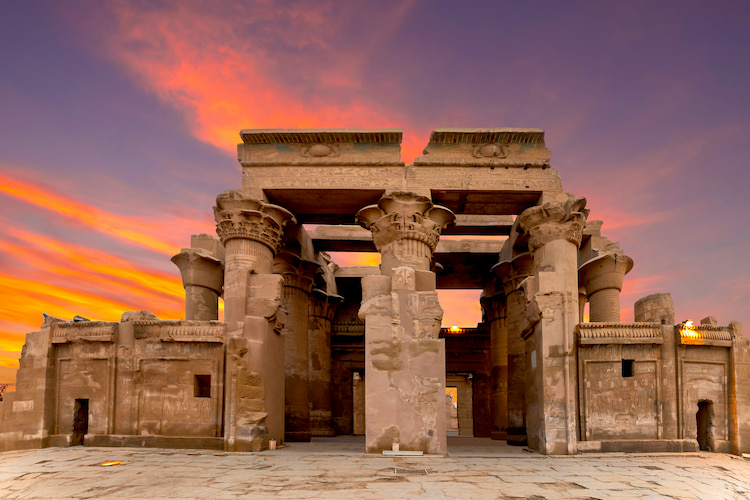
Discuss the significance of the crocodile god Sobek in Egyptian mythology.
In ancient Egyptian mythology, the crocodile god Sobek was considered a complicated figure swinging between good and evil. He was associated with the god of chaos, Set, whom Horus battled over the rulership of Egypt. Set's allies turned themselves into crocodiles to escape.
In the Pyramid Texts, Sobek was known as "the raging one" who takes women from their husbands whenever he wishes, according to his desires. However, some sects believed that Sobek created the world, rising out of the dark, primordial water to shape the universe.
Sobek was a significant god of fertility because he was associated with the River Nile, which flowed from his sweat, giving all its life-giving power. Consequently, Pharaohs wanted to imbue themselves with the strength and speed of crocodiles, with the hieroglyphic for sovereign being a crocodile.
Moreover, locals at Kom Ombo believed or perhaps hoped, that by worshipping crocodiles as sacred, they would be protected from these ferocious beasts. This temple even had a small pool in which they raised the reptiles. Many ancient tombs included a mummified crocodile corpse to extend that protection to the afterlife.
Nowadays, the crocs are long gone, but you can learn more about them in the adjacent Crocodile Museum, where mummified crocs are exhibited, along with intriguing explanations.
Sobek played an essential role in ancient Egyptian mythology, illustrating the complex and many-sided nature of the gods they worshipped. [9][10]
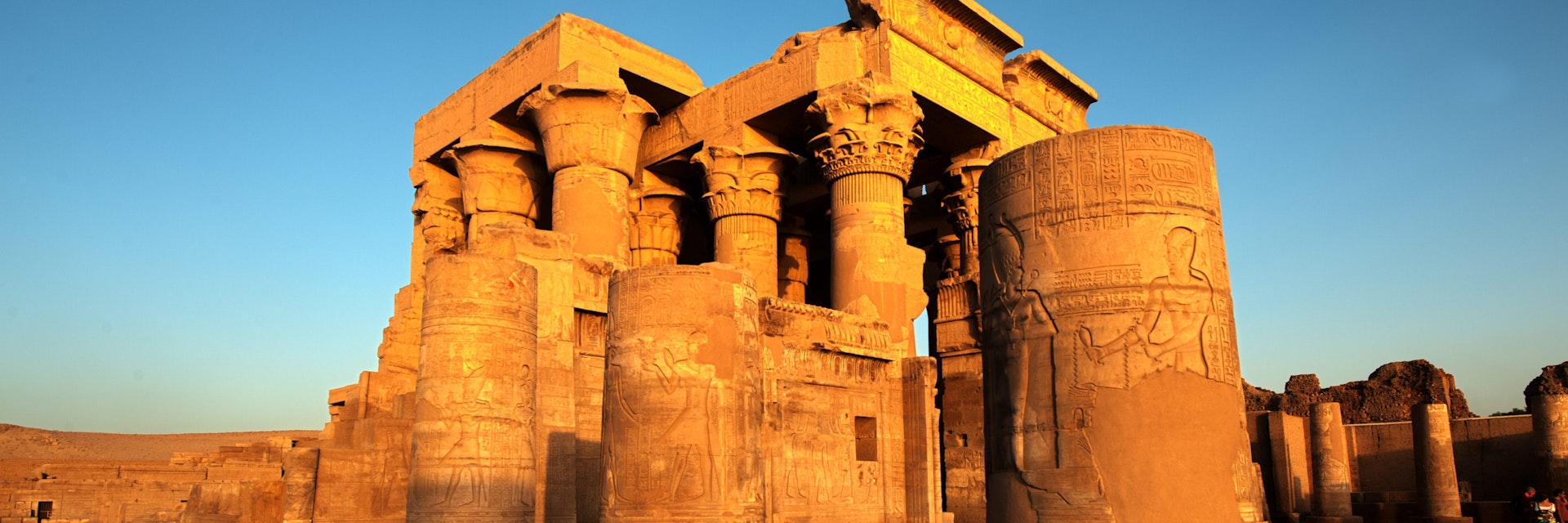
Describe the Crocodile Museum and the mummified crocodiles found there.
If you've enjoyed exploring Kom Ombo Temple and learning about the significance of the crocodile god Sobek in Egyptian mythology, visiting the Crocodile Museum is a must.
Located within the temple complex, the museum houses one of the world's largest collections of mummified crocodiles found locally. The mummified crocodiles are certainly a fascinating sight, with some measuring up to 20 feet long!
But beyond the crocodiles themselves, the museum also offers a deeper understanding of the role of crocodiles in ancient Egyptian culture. Visitors can view exhibits on the history of crocodile worship and displays focusing on the scientific study of crocodile behaviour and ecology.
The museum is well-lit and air-conditioned, making it a welcome respite from the intense heat outside. Plus, with clearly written explanations in both English and Arabic, it's an accessible destination for anyone curious about the fascinating creatures that once roamed the Nile. [11][12]
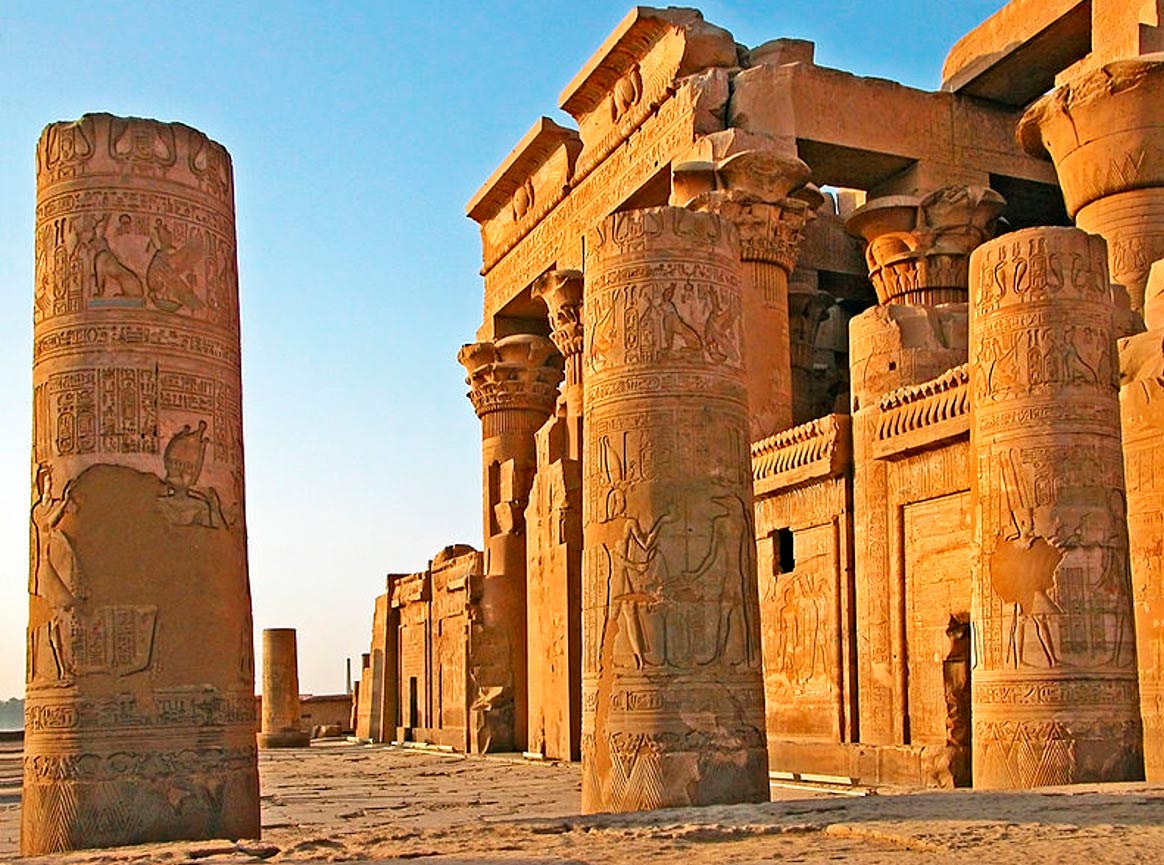
Mention how locals in ancient times believed that worshipping crocodiles would protect them.
In ancient times, the people who lived near the Nile believed in the importance of worshipping crocodiles. They considered these ferocious beasts sacred creatures that could protect them from harm. These locals thought that if they worshipped the crocodiles, it would form a bond between them and the animals, which would ultimately protect them from the reptiles.
Many ancient tombs included a mummified crocodile corpse, which people believed would extend that protection into the afterlife. Nowadays, the fear of crocodiles is not as prevalent, as these creatures are long gone from the region. However, the well-preserved crocodile mummies displayed in the Crocodile Museum near Kom Ombo serve as a reminder of the significance of these animals in the lives of ancient Egyptians.
Despite being a symbol of ferocity, the crocodile god, Sobek, was seen as a powerful god controlling water and fertility. He was a god that Egyptians wanted to emulate, and they believed that his strength and speed could be passed on to the pharaohs, which is why the hieroglyphic for sovereign was a crocodile. [13][14]

Discuss the history of the temple and its construction.
For many reasons, the Temple of Kom Ombo is a unique and fascinating site. First and foremost, it is a double temple dedicated to both Sobek and Horus. This dual dedication is significant not only because it required two sets of courts, hypostyle halls, and sanctuaries but because it symbolized the local and universal themes that the two deities represented.
The temple was built in stages, beginning early during the Ptolemaic period, around 180 BCE, although evidence suggests that it was constructed on top of an earlier temple. The temple's construction was deliberate, and its architectural layout is similar to other temples in Egypt, with two main entrances, a large hypostyle hall, and a series of smaller chambers leading to a sanctuary.
Despite its age, the temple is well-preserved and home to several fascinating reliefs and carvings that depict the various deities and their stories. The crocodile god Sobek is a significant figure in Egyptian mythology and was often worshipped by the locals at Kom Ombo, who believed that worshipping crocodiles would protect them from the fearsome beasts.
Today, visitors can explore the temple, admire its unique architecture, and visit the adjacent Crocodile Museum, which houses hundreds of mummified crocodiles. Whether you're a history enthusiast or simply curious about ancient Egyptian culture, visiting the Temple of Kom Ombo is an absolute must. [15][16]
Describe the layout of the temple and its similarity to other temples in Egypt.
The temple at Kom Ombo is a fascinating example of ancient Egyptian architecture, known for its unique layout that sets it apart from other temples in Egypt. Built on a grand scale with impressive columns and towering walls, the temple was designed to inspire awe and evoke a sense of the divine.
Distinctly, the temple is divided into two sections, each dedicated to a different deity: Horus, the falcon-headed god of the sky, and Sobek, the crocodile god of fertility and rebirth. These two sections are connected by a series of courtyards, halls, and chambers decorated with intricate carvings and paintings depicting scenes from Egyptian mythology.
One of the temple's unique features is its symmetry. Both sections are identical in shape and design, featuring a primary sanctuary, a hypostyle hall with columns, and various smaller chambers and courtyards. The symmetry symbolizes the harmony between the two deities it honours, often considered complementary forces in Egyptian mythology. Furthermore, the temple's layout reflects the ancient Egyptian culture's importance of balance and harmony across all aspects of life, including religion and architecture.
Despite similarities with other Egyptian temples, the temple at Kom Ombo stands out for its unique combination of deities and stunning artwork. It showcases some of the most well-preserved reliefs and paintings from ancient Egyptian times, with intricate scenes depicting battles, sacrifices, and everyday lives of Egyptians. The crocodile god Sobek is particularly important in the temple, as he was closely associated with the Nile River's fertility, essential to agriculture and the ancient Egyptian economy.
Visitors can also explore the nearby Crocodile Museum, which houses mummified crocodiles and other artifacts related to the worship of Sobek. Overall, the temple at Kom Ombo is one of Egypt's most fascinating and unique sites, making it a must-visit destination for anyone interested in ancient history and culture.
Mention the evidence of an earlier temple on the site.
Evidence suggests that Kom Ombo Temple was built upon an earlier temple. This is common in Egypt, as many temples and other structures were built upon previous ones for various reasons. However, what is interesting about Kom Ombo is that even though the previous temple is not well-documented, it is thought to have been dedicated to the same deities as the newer double temple.
The similarities in dedication suggest that the cult of Sobek and Horus was important in the area and was likely practised for centuries. This continuity in religious tradition is fascinating and indicates that the temple held significant religious and cultural value to the local population.
The evidence of the older temple can be seen in the remaining stonework and foundation of the current temple, which is still visible today. It is a testament to the enduring significance of Sobek and Horus in Egyptian mythology and a poignant reminder of the long and rich history of the region. [19][20]
